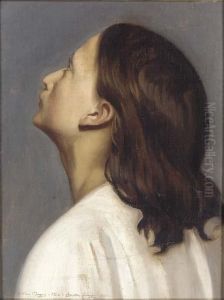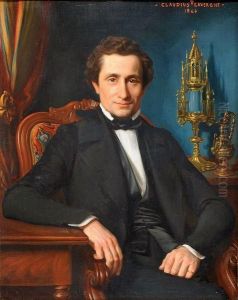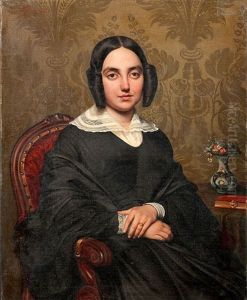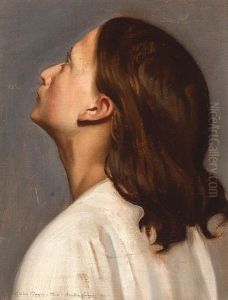Claudius Lavergne Paintings
Claudius Lavergne, born Louis-Stanislas-Henri Lavergne on March 22, 1815, in Paris, was a French painter and stained glass designer, recognized for his religious compositions and his contributions to the revival of stained glass art in the 19th century. He was a student of the influential French painters Ingres and Picot, and through their tutelage, Lavergne developed a style that reflected the neoclassical and religious sensibilities that were prevalent during his time.
Lavergne's work in stained glass was particularly notable, and he was instrumental in the revival of French stained glass traditions, which had declined after the French Revolution. Working during a period that saw a resurgence of interest in medieval and Gothic art, Lavergne was inspired by the craftsmanship and spiritual significance of medieval stained glass. He believed that stained glass was a form of painting that could bring together the highest aspirations of art and the devotional intentions of the faithful.
Throughout his career, Lavergne also produced a number of easel paintings, altarpieces, and frescoes for churches across France. His artistic output was characterized by a meticulous attention to detail and a commitment to conveying religious narratives with clarity and emotional depth. Lavergne's work often featured figures with serene and idealized features, set within compositions that emphasized symmetry and balance.
Despite his success as a painter, it was his work with stained glass that had the most enduring impact. Lavergne's designs can still be found in many churches in France, and they are celebrated for their rich colors and harmonious integration with the architectural spaces they inhabit. His legacy is also preserved through his writings on art, which provide insights into his creative process and his philosophical views on the role of art in society.
Claudius Lavergne passed away on November 30, 1887. Today, he is remembered for his contributions to 19th-century French art, particularly in the realm of religious painting and stained glass design. His works continue to be studied and appreciated for their beauty and historical significance.



